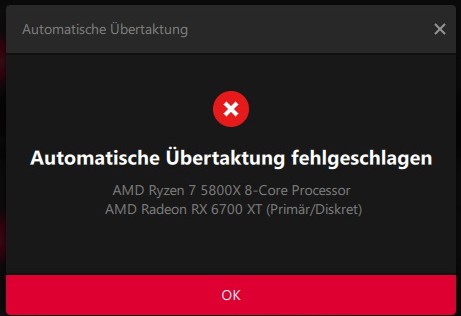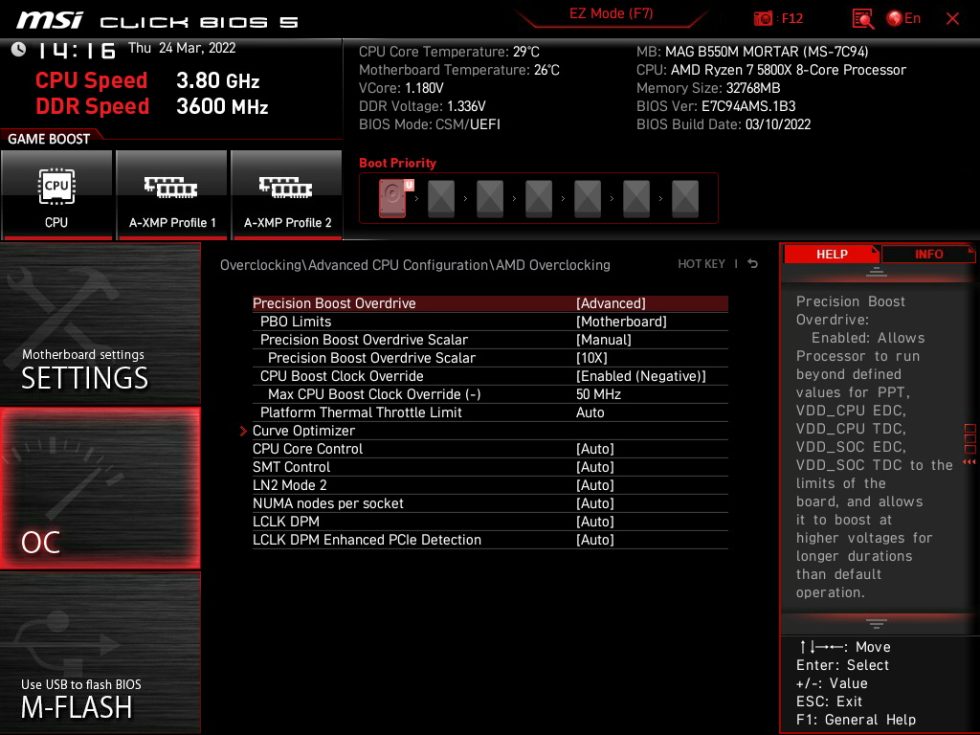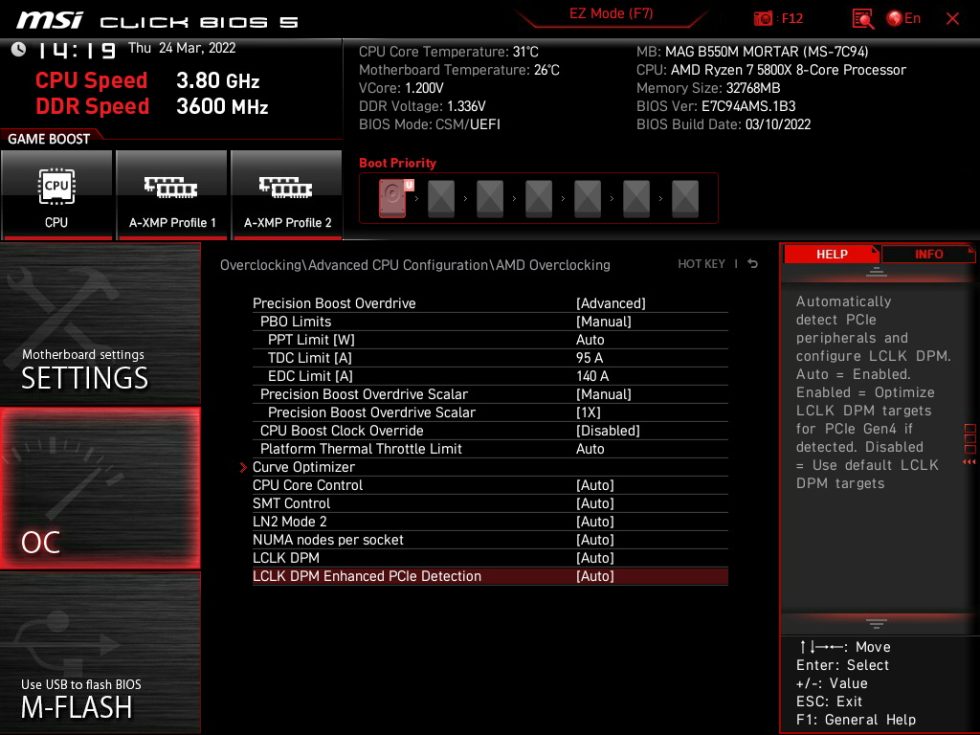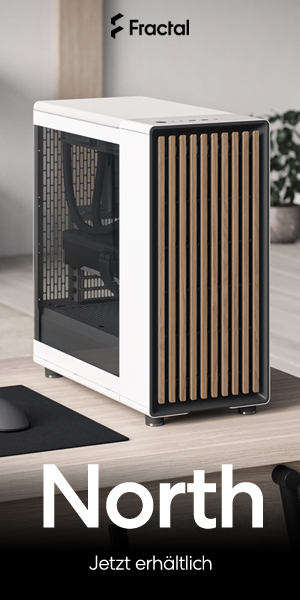Why does a graphics driver intransparently intervene in the BIOS settings of the CPU and reset manually optimized settings on its own? Without wanting to create a sensation, which it is not really, one has to ask oneself why such things happen at all. Today’s post is based on feedback from a reader who has already used it to seek advice in other forums Pascal (der-Kalli) pointed out the driver’s strange behavior to me, and in the meantime I was able to reproduce it myself in one case.
What was it about exactly? Since the release of AMD’s GPU driver “Adrenalin 22.3.1”, the Ryzen Master module, which is now firmly integrated into the driver, also tries to make changes to the CPU configuration when loading a GPU profile in the driver. If certain CPU settings have been changed manually in the BIOS beforehand, the driver will first display a loading animation and then display a message that the automatic overclocking process has failed and that you should please restart so that the changes are applied. The GPU for which the profile was supposed to be loaded is set to default settings again and the settings saved as a profile can no longer be used.
After the subsequent reboot, the GPU profile can be loaded successfully again, but if you had also clocked down your CPU for an optimal, individual undervolting, sporadic crashes occur with a bit of bad luck. The driver and the Ryzen Master module contained in it partially changed the values of the CPU configuration in the BIOS or overwrote its own settings. The changes made in this way then no longer match the rest of the individual CPU profile, which explains the crashes.
In the reader’s case, the latter had even reduced the Ryzen 7 5800X’s maximum boost to 4800 MHz, i.e. by 50 MHz. However, the driver has increased the boost clock to 4850 MHz again, as well as changed some important PBO values for the CPU. The instability ultimately resulted from the removal of the negative offset and the now unstable settings of the CurveOptimizer. Let’s first compare the BIOS entries whose changes could be reproduced and start with the initial setting in the BIOS:
The driver then overwrote the PBO values without asking when loading the GPU profile, without explicitly informing the user about the changes. So as a result, the system became unstable:
As a small note, it should also be noted that the Ryzen Master module in the driver tries to make changes in the BIOS even if the GPU profile has been saved on a system where no changes to the PBO settings have been entered in the BIOS at all. After rebooting with the changes made by the Ryzen Master module, the saved GPU profile can also be loaded, by the way. Instabilities can be fixed afterwards by going back into the BIOS and restoring the original configuration for the CPU. But that cannot and must not be the point.
Alternatively, it can of course be a solution to disable the Ryzen Master module in the driver with the Radeon Software Slimmer 1.6. This option can be found under “Post Install” -> “Scheduled Tasks” -> “AMDRyzenMasterSDK”. Thedownload of the tool is free of charge,. As always, you use it at your own risk (just like installing the Radeon software).
For an unemotional but correct classification: AMD’s non-transparent implementation seems a bit too much of a good thing to me. Of course, a lot of room for adaptation is always good in principle, but the software’s functions along with basic interventions in the BIOS settings have to be explained transparently and comprehensibly for the user, so that the user also knows what actually changes. Automatic changes that intervene so deeply in the system and about which the user is not informed should not really exist. Even more so when you load something for your GPU, but it actually affects the CPU as well.
Or even more curious: If only something changes in the CPU, but the GPU remains unchanged because you had simply saved default settings in the profile. A routine during the loading process of the saved GPU profiles is to blame for this, which should have been programmed differently. The fact is that it actually looks like a small thing, but it can have a big impact on the system. Of course, this also raises the question of the sense of manual overclocking when the CurveOptimizer produces settings that AMD obviously does not want via the Ryzen Master.
Now we come to the Sunday question for all those who have both a Ryzen CPU and a current Radeon graphics card installed in the system. Can you also reproduce this behavior and if so, at which changes of the BIOS settings for PBO did the GPU driver then make unsolicited changes when loading a saved profile? Feel free to discuss this in the forum to paint a clearer picture of this behavior.
Once again, my thanks go to the community for participating in general and especially to the reader “der-Kalli”, who had contacted me with this problem and whose hints and text sections have been incorporated into this article. And if anyone from the driver team in Toronto is reading along again: we would really appreciate a response. If it is just a programming error or carelessness in the driver, please fix it. But we would already like to know why a graphics driver messes with the CPU’s PBO settings without being told how and why and how to stop it.


































71 Antworten
Kommentar
Lade neue Kommentare
Veteran
Urgestein
1
Urgestein
Veteran
Urgestein
Veteran
Veteran
Mitglied
Veteran
Veteran
1
Veteran
Mitglied
Veteran
Mitglied
Mitglied
Urgestein
Alle Kommentare lesen unter igor´sLAB Community →